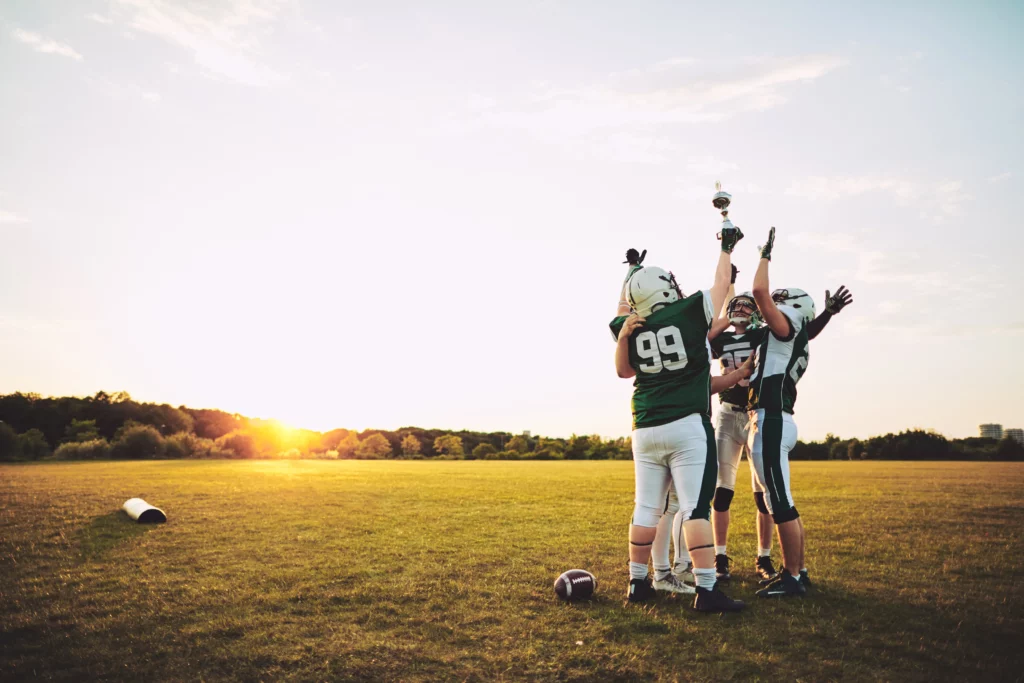The Importance of Preseason For Rugby Injury Prevention

Why is pre-season training important?
Pre-season training is important to ensure a successful season to come, as well as to reduce the risk of a musculoskeletal injury before and during the season. The importance of preseason has been previously researched in basketball and football with the FIFA11+ injury prevention exercise plan – something I will be referencing throughout and have also created a short video on below (Grooms et al. 2013, Longo et al. 2012, and Silver-Granelli 2015).
Turning our attention to Rugby and other such contact sports, there has been a number of studies that associate neck strength and risk of concussion. Such studies draw the conclusion that strengthening the neck muscles and working on balance and control can reduce such risk (Collins et al. 2014). Establishing this strength before the start of the season is imperative. As such, exercises such as maintaining a bear crawl position on hands and toes whilst a partner applies force in various directions to the head, to which you resist the head from moving, can be useful to practise regularly.
Another important point to make is that completing a successful preventative exercise programme depends on the right intensity and combination of exercise. For example, a study completed by Sugimoto et al (2014) found a close relationship between repetitions (5 reps versus 15 reps) and reductions in knee ligament injuries in female sportswomen – too many repetitions can cause an increased risk of injury, but so too can too little.
What does this mean for your training?
This will vary on your sport and the level at which you play. Preseason training needs to be progressive and sport-specific. If we look at an example of a trial focusing on rugby at under 15s, 16s and 18s, the preseason format was broken down into four phases, which increased in repetitions and difficulty of the exercises each time. This was added at the beginning of a training session for 20 minutes.
Within the study, exercises included running-based exercises, such as controlled rehearsal of sport-specific landing and cutting manoeuvres, balance exercises, both static and dynamic hop drills, and resistance training, which included neck strengthening exercises with verbal feedback given by coaches on technique – which is similar to the Football-specific FIFA 11+ guidelines.
The important role of coaching staff
The coaching staff play a major role in preseason training. They need to decide what style of play the team will be adopting next season, depending on the players they have available. Related to this, ten 20 stone rugby players would not benefit as much from a wide expansive running game compared with a power game; nor would a marathon runner benefit as much from only working on short 100m sprints compared to putting in the mileage and increasing distance over time.
Therefore, once the coach has decided the style and associated strength and conditioning, pre-season training should follow suit to make sure the competitors are sufficiently fit to perform their role, appropriately powerful to complete the specific tasks, and have the appropriate overall core strength, balance and flexibility to have a prolonged and injury-free season.
Key factors in preseason training
In summary, pre-season training is vital for a successful season ahead and to prevent injury. The key points are to work on sport-specific exercises including balance, resistance training, co-ordination and flexibility in a graded exercise progression plan being mindful of not overdoing it!
Furthermore, preseason training needs to be undertaken regularly and consistently to be successful. This requires a good understanding of why it is included in your programme, as well as dedication of those involved to carry it out often enough to be useful once the season has started. This is usually at least twice per week when usual training would occur for amateur sports people.
Importantly. if an injury does arise, one of the worst things you can do for the good of the rest of your season is to ignore it – despite how much you’re enjoying being back training and wanting to establish your place in the side. In such a circumstance, make the right decision and book in for a physio appointment where we can assess things properly and rectify anything underlying so you’re free to get the most out of the coming season.
Lastly, make sure to check out the video below of the 11+ football preseason exercises. These would be useful for most team sports at amateur level to add into preseason training…whatever age you are!
The 11+ Football preseason exercise programme:
- Bench – (core) plank for 15seconds with one leg raised.
- Sideways Bench – (core) Side plank on hand, with bottom knee bent and top leg straight. Hold 15seconds each side twice.
- Nordics – (Hamstrings) With a partners help kneeling with body straight lower forward and raise back up. X5reps
- Cross-country skiing – (lower limb strength) Standing on one leg bend and straighten weight bearing leg while swinging opposite arm back and forth. Repeat x15 right leg and x15 left leg.
- Chest-passing in single-leg stance – (Balance and coordination) stand on one leg weight slightly onto toes 3metres away from partner throw a ball one handed and catch with both hands. Repeat x10 Left leg and x10 right leg.
- Forward-bend in single-leg stance (Balance and coordination) same as exercise 5 but touch the ball to the floor before throwing. Repeat x10 left leg and x10 right leg.
- Figure-of-eight in single-leg stance (Balance and coordination) same as exercise 5 but pass the ball round your supporting leg then the non supporting leg and then throw the ball back. Repeat x10 each leg.
- Jumps over a line (Power) – Stand 20cm away from a line jump with both legs over the line landing as softly as possible as fast as possible. X10 side to side and x10 forward and backwards.
- Zigzag shuffle (Power and co-ordination) – Zigzag course 6 cones 10 x20m apart legs shoulder width apart one shoulder leading towards the cone shuffle to the cone then change direction so the other shoulder faces the next cone. Complete course x2.
- Bounding (Power and co-ordination) – Stand on take off leg spring as high and far as possible driving back leg as high as possible, soft landing. Repeat 30m x2.
References:
Collins C.L., Fletcher E.N., Fields S.K., et al. Neck Strength: a protective factor reducing risk for concussion in high school sports. Journal of Primary Prevention 2014; 35: 309-319.
FIFA 11+ Injury Prevention Programme.
Grooms D.R., Palmer T., Onate J.A., et al. Soccer-specific warm-up and lower extremity injury rates in collegiate male soccer players. Journal of Athletic Training 2013 ; 48: 782-789
Hislop M.D., Stokes K.A., Williams S., McKay C.D., England M.E., Kemp S.P.T, Trewartha G. (2017). Reducing musculoskeletal injury and concussion risk in schoolboy rugby players with a pre-activity movement control exercise programme: a cluster randomised controlled trial.
British Journal of Sports Medicine 17th May 2017.
Longo UG, Loppini M, Beton A, et al. The FIFA 11+ program is effective in preventing injuries in elite male basketball players: a cluster randomized controlled trial. American Journal of Sports Medicine 2012 ;40 :996-1005.
Shanley E., Thigpen C., Kisnberth M., Gilliland R.G., Thorpe. J., Nance D., Register-Mihalik. J.K., Tokish. J. Heads Up Football Training Decreases Concussion Rates in High School Football Players.
Clinical Journal of Sports Medicine 2019 March 18.
Silvers-Granelli H., Mandelbaum B., Adeniji O., et al. Efficacy of the FIFA 11+ injury prevention program in the collegiate male soccer player. American Journal of Sports Medicine. 2015 ; 43: 2628-2637.
Sugimoto D, Myer GD, Foss KD. et al. Dosage effects of neuromuscular training intervention to reduce anterior cruciate ligament injuries in female athletes: meta- and sub-group analysis. Journal of Sports Medicine 2014; 44:551-562.

